
Warlords

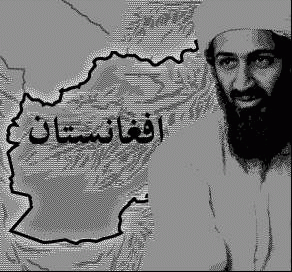



Years of conflict have made gun culture the norm in Afghanistan
Jehad means literally "struggle" . For some it means the struggle to defend one's faith and ideals against harmful outside influences.
For others it has come to represent the duty of Muslims to fight to rid the Islamic world of western influence in the form of corrupt and despotic leaders and occupying armies. Modern jehad The origins of jehad can be traced back to two early 20th century figures, who started powerful Islamic revivalist movements in response to colonialism and its aftermath. Pakistan and Egypt - both Muslim countries with a strong intellectual tradition - produced the movements and ideology that would transform the concept of jehad in the modern world.
They blamed the western idea of the separation of religion and politics for the decline of Muslim societies. This, they believed, could only be corrected through a return to Islam in its traditional form, in which society was governed by a strict code of Islamic law. In the 1950s Sayed Qutb, a prominent founder of Egypt's Muslim Brotherhood lied the corner stone of moder jehad.
Iranian leader Ayatollah Khomeini developed his own version of radical Islam.
In 1979, the battle to liberate Afghanistan from Soviet occupation gave radical muslims opportunity to put his revolutionary Islamic ideals into practice. Saudi Arabia, which follows the fundamentalist Wahhabi school of Islam, had become a natural haven for radical Islamist. Saudi Arabia threw its political and financial weight behind the Afghan jehad, which was also backed by Pakistan and the United States. The ruling family, which had been criticised for its pro-western stance, seized upon the Soviet invasion of Afghanistan as a cause which could rally Islamist support and deflect internal criticism. Many Arabs joined the Afghan mujahedeen, along with Osama Bin Laden. Osama Bin Laden has continued a strain of militant Islam
The war in Afghanistan created good opporunities for fundamentalists. Once the Soviet forces had been expelled from Afghanistan,the extremist of the Muslim Brotherhood , argued that "Afghanistan should be a platform for the liberation of the entire Muslim world".
Teir positions were strengthened by the 1991 Gulf war, which brought US troops to Saudi Arabia. Bin Laden's followers could not accept US troops in Saudi Arabia.
The people of Afghanistan faced an uncertain future under Mujahedeen and Taleban regims. Afghanistan is fragmented along ethnic, religious and political fault lines, and key players from each group are already vying for power.
Northern Alliance
The Northern Alliance is a disparate collection of political parties and ethnic groups opposed to the Taleban. They are predominantly Tajik, but also include other minority groups such as Uzbeks and Hazaras.
The nominal head of the alliance, Burhanuddin Rabbani, was the former president of Afghanistan until the Taleban ousted him in 1996. Alliance leaders also include former warlords Abdul Rashid Dostom who have changed sides several times since 1990 and hezb-e-wahdat, a shiya group back by Iran.
Many people blame the alliance for years of bloodshed after the fall of the Moscow-backed Communist government in 1992. Tens of thousands of civilians were killed when mujahideen groups fought and failed to agree on ways to share power. Thousands of Afghans, including specific individuals targeted for assassination, died in 1993 during the course of the civil conflict. Perpetrators and motives were difficult to identify in most cases, as political motives were often entwined with family and tribal feuds, battles over drug turf, religious zealotry, and personal vendettas. Intense factional fighting in Kabul in February was marked by reported excesses, even atrocities, attributed to both Hizbi Wahdat fighters and the Ittehad-i-Islami/Shura-i-Nazar alliance. These reports included incidents of mass rape, abduction, and the torture and murder of both combatant prisoners and civilians. In February, according to press reports, approximately 60 women were seized by armed men, held in the Institute of Social Sciences in Kabul, raped, and killed.
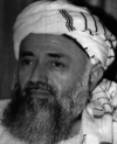
Jamiat-e Islami-e Afghanistan (Islamic Society of Afghanistan)
Birth: 1940, Faiz Abad/Badakhshan ProvinceIn 1968 he completed a masters degree in Islamic Philosophy at the prestigious Al-Azhar university in Cairo. On his return toAfghanistan he took on the task of organising students in the Jamiat-e-Islami party's campaign to resist the secularisation policies of the government at the time. He was appointedleader of the party in 1972, but was forced to flee to exile in Pakistan in 1974 under increasing opposition. Then, when the Soviet Union sent troops into Afghanistan the following year, Mr Rabbani's forces, commanded from Pakistan, became a key mujahideen group in the war against them.
The former president of Afghanistan, is the political leader and nominal head of the Northern Alliance. He is also the leader of Jamiat-e-Islami, the largest political party in the alliance.
After the proclamation of Republican Regime in Afghanistan by President Mohammad Daoud in 1972, Rabani fled to Pakistan in 1974 after series of antigovernment activities inside the country. In Pakistan he sought the support of Pakistani government and the group of "Jamiat-e Islami". He carried out military activities during 1978-1992 within Afghanistan against Kabul regime. After the resignation of Najibullah in 1992, B. Rabani was elected as intrim president of Islamic Council of Mojahedin factions for 1 year by Mujaheddin executive council in October 1992.
He had hung onto power for four years after a group of mujahideen factions overthrew the Russian-backed government and agreed to nominate him president for a single year, in 1992.
The presidency was supposed to rotate among the factions, but when it came time for Rabbani to give up office, he refused. He didn't resign under previous agreement and remained in power until 1996. He spent most of his presidency in fighting with other Mujaheddin militia who forced to oust him from Kabul power. As results of fierce fighting between his chief of Command Ahmad Shah Masoud and rival Gullboddin Hekmatyar of Hezib-e-islami.
Mr Rabbani returned to the Afghan capital after the Taleban fled, five years after the religious militia expelled him from the city.
The warring parties were responsible for the killing of 25,000 people in Kabulin attacks on civilians during this period, which was marked by murders, disappearances, torture and rapes, according to Amnesty International.

Mohammed Fahim was the head of intelligence for the Northern Alliance and replaced Ahmad Shah Massoud, who was assassinated shortly before the 11 September,2001 attacks on the US.
Fahim commands the biggest militia within the alliance and led his troops into Kabul soon after the Taleban deserted. Kabul was under the control of a military and security committee which Fahim heads with the alliance's Interior Minister Younis Qanooni.
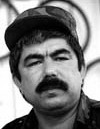
Rashid Dostum is the head of Jombesh-e Melli Islami (the National Islamic Movement), a predominantly Uzbek militia forming part of the Northern Alliance.
One of the old-style warlords during the Soviet occupation, he was commander of the Juzjani Militia with 20,000 regular militia forces, fighting with the Soviets against the mujahideen.
But within a couple of years he had changed sides, and joined President Rabbani's newly formed mujahideen government in an effort to gain a greater role in the administration, before once more switching sides. The forces he commanded in Kabul in the mid-1990s were accused of atrocities against civilians and extensively looted the capital.
The leader of the second largest party in the anti-Taleban Northern Alliance, General Dostum directed the campaign to recapture the Mazar-e-Sharif - the town he once ruled.
The recapture marked an extraordinary comeback for Dostum - a man whose career has seemed in ruins on several occasions. His ability to bounce back can be attributed partly to a willingness to switch sides.
Pro-Soviet commander ,leader of Afghanistan's minority Uzbek community, is a controversial figure.
In the years of Soviet domination, he transformed himself from Communist union boss working on a gas field to the leader of an Uzbek militia fighting on the Soviet side.
By the mid-1980s, he was in command of a 20,000-strong militia controlling the northern provinces of Afghanistan.
He went on to join the government of President Najibullah against the mujahedeen forces who were fighting to end Soviet domination and was awarded a medal for his services. Retreat to the north
Towards the end of Najibullah's rule in early 1992, he changed sides to fight with the mujahedeen.
He briefly joined the mujahideen government of Burhanuddin Rabbani before defecting again, even briefly forming an alliance with the Islamist forces of Gulbuddin Hekmatyar.
Dostum sided with Najibullah until his defeat was imminent
Dostom then retreated to his power base in the north, consolidating his hold on an area which covered six provinces with a population of around five million. At the height of his power in 1997 - then aged 43 - he controlled a kind of mini-state in northern Afghanistan.The Taleban forced him to flee to Turkey.
While much of the rest of Afghanistan was in ruins, his stronghold of Mazar-e-Sharif - a city of around two million people - was thriving. Dostum grew rich, but his rule was harsh. He is reported to have frequently ordered public executions of criminals, who were usually crushed to death under tanks. His followers gave him the title of Pacha .

Amnesty International is concerned about reports in the international media that up to 2,000 bodies had been discovered from mass graves in northern Afghanistan. The corpses which were in various stages of decay were reportedly those of the Taliban militia who had been dispatched to capture the city of Mazar-e Sharif last May. They are reported to have been killed deliberately and arbitrarily while in the custody of General Abdul Malik, an anti-Taliban military commander in control of the area at the time, and buried in some 20-30 mass graves near the city of Shebarghan in the northern province of Jowzjan.
The ongoing war in Afghanistan makes information on human rights abuses in the country difficult to gather and verify, but the pattern of deliberate and arbitrary killings that have characterized the conflict in the past makes it plausible that those buried in these mass graves may have been killed while in captivity. Such killings would be in contravention of international humanitarian law which establishes minimum standards for the protection of individuals in situations of armed conflict. In particular, Common Article 3, which appears in all four Geneva Conventions of 1949 and applies to all parties to an internal conflict, clearly defines the people to whom its protection is extended:
"Persons taking no active part in the hostilities, including members of armed forces who have laid down their arms and those placed hors de combat by sickness, wounds, detention or any other cause..." Common Article 3 also requires that "in all circumstances" such people shall be "treated humanely, without any adverse distinction founded on race, color, religion or faith, sex, birth or wealth, or any other similar criteria". The article prohibits certain acts "at any time and in any place whatsoever with respect to the above-mentioned persons", including: "a) violence to life and person, in particular murder of all kinds, mutilation, cruel treatment and torture; b) taking of hostages; c) outrages upon personal dignity, in particular humiliating and degrading treatment;"
Furthermore, these reported killings once again highlight the catastrophic nature of the human rights situation in Afghanistan. Amnesty International is urging all party leaders in the country to abide by the rules of armed conflict and make it clear that they will not tolerate any human rights abuses including deliberate and arbitrary killings. Amnesty International is urging members of the international community to take collective action to pressure all parties to this tragic conflict to halt human rights abuses in Afghanistan.
The mass graves
International news agencies reported, of the discovery of mass graves in northern Afghanistan. Those buried were reportedly Taliban militia possibly killed after they had been captured by forces of Abdul Malik. The exact number of those killed cannot be easily established, but most reports put the number at around 2,000 and the number of graves at between 20 and 30. The dead are thought to have been among some 3,000 Taliban militia taken prisoner after the Taliban entered the city of Mazar-e Sharif in May 1997 but retreated shortly from the city in the face of an uprising by the local population as well as a counter attack by the combined forces of General Abdul Malik and another armed political grouping, Hizbi Wahdat led by Karim Khalili.
Malik had earlier ousted Abdul Rashid Dostam from the city. He had made a pact for the Taliban to enter Mazar-e Sharif but reneged on the agreement after they entered. Malik then became the sole chief commander of northern Afghanistan from May 1997 for several months. Dostam who fled to Turkey after his ouster returned to Afghanistan in September this year and regained control over much of the northern areas, namely the provinces of Balkh, Jowzjan, and Samangan. For several weeks, both Malik and General Dostam remained in the anti-Taliban alliance which controls about one third of the country. In mid-November,Malik was reported to have fled the country. His exact whereabouts are not known but some reports suggest that he may have fled to Turkmenistan and from there to Iran.
According to the AIP, the news of the discovery of the mass graves was made public by Dostam who offered to facilitate the airlift of the bodies to the Taliban- controlled areas for burial. The graves were reportedly found near the town of Shebarghan in Jowzjan province which is now controlled by General Dostam. He has said that the soldiers were killed when the area was controlled by his rival General Malik, but Malik has denied this.
The United Nations Secretary General, Kofi Annan, expressed deep concern about the reports of the discovery of these mass graves. He said he had “already asked the UN Special Mission to Afghanistan to find out more about this sad situation”. He also appealed to all parties to the conflict to respect the Geneva Conventions and to cooperate with the International Committee of the Red Cross, which should be permitted access to all prisoners and wounded fighters in the custody of every party in Afghanistan. He further said that: “This news is a reminder that all Afghan parties and those countries and organizations which are interested in Afghanistan urgently need to cooperate with the United Nations to put an end to the senseless conflict which has caused so much suffering and damage to the Afghan people.” The mass graves were shown to foreign journalists by Dustan's officials. The graves were reportedly strewn with ribcages, limb bones and skulls with tufts of hair still attached. A correspondent reported :
“The air in the barren desert is poisoned with the smell of rotting flesh. One corpse, partially decomposed and partially torn apart by scavenging animals, was wrapped in a distinctively striped cotton-stuffed hospital mattress. The needle from an intravenous drip was still lodged in his decayed arm.” The same report quoted some 80 remaining prisoners in the Shebarghan prison as saying they had witnessed the transfer of groups of fellow prisoners with the promise that they would be exchanged. The prisoners believe that those taken away are among the people killed and buried in these graves. Those who were not killed were reportedly subjected to other human rights abuses. They were reportedly subjected to torture and starvation while in custody. One prisoner told a foreign journalist that more than 10 people died from starvation over five months and the rest were forced to eat leaves to survive.
Amnesty International's recommendations
1. Amnesty International urged all warring factions to abide by the rules of armed conflict and refrain from killing prisoners or committing other human rights abuses. 2. Amnesty International welcomed the UN Secretary General's intervention in this matter and hopes the UN Special Mission to Afghanistan will release publicly a full report on this incident as soon as possible. It urged all parties to cooperate with the Special Mission by providing immediate and unrestricted access and security for those who cooperate with its inquiry. 3. Amnesty International called upon all the countries that support warring factions to accept responsibility for their contribution to human rights abuses that these factions perpetrate, and place pressure on them to respect human rights.
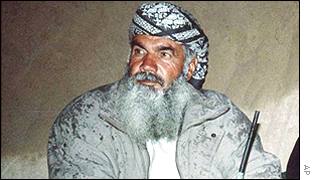
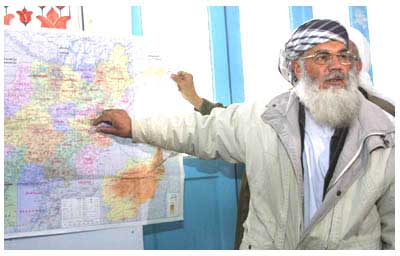
A warlord in the western part of Afghanistan.Masoud was "Lion of Panjsher" and Ismail Khan is known as the "Lion of Herat". He is the former governor of Herat and was a mujahideen commander during the Soviet occupation and a thorn in the side of the Afghan communist government.
When Herat finally fell, he was captured by Malik and was handed over to the Taleban after a deal in 1997. He escaped in march 2000 after three years in a Taleban prison.
A member of Jamiat-e-Islami, the largest political party in the alliance, led by Burhanuddin Rabbani. After retuning back to power, Khan is thought to be receiving backing from Iran. Fighters loyal to Khan reclaimed Herat for the former governor shortly after the Northern Alliance entered Kabul.
Now Ismail Khan demands some share of power on behalf of the minority Shia Muslim population.
The former governor of Herat, Ismail Khan, has been silent since his escape from a prison in Kandahar.
He can claim to represent a vanished golden age, as well as having an unbloodied reputation
The former governor was mooted as a potential successor to the late Ahmed Shah Massoud, the charismatic Northern Alliance commander, but holds little support in the north-eastern region of Afghanistan.
Afghan affairs commentator Olivier Roy says little information has come from Ismail Khan's camp. The extent of the co-operation between him and the Northern Alliance at the moment is not significant.
His amazing escape from his Taleban captors in March last year which brought him to prominence.The Taleban offered a large reward for his recapture.
Ismail Khan was an officer in the national army and rose up against the Soviet forces stationed in Herat just months after their arrival in 1979. This initial fray resulted in the death of hundreds of Soviet soldiers. It was the start of his 10 year war against communism.
In the beginning, his rule in the city was hailed as a success. Herat's schools were filled with more than 40,000 children, nearly 50% of whom were girls.
But the establishment of a conscript army was not welcome in the traditionally liberal city. Corrupt officials and reports of a lack of funds to pay his soldiers were weaknesses that counted against him when the Taleban launched their offensives towards Herat. Taking the city of Herat, which sits near the borders of Iran and Turkmenistan, was an asset too attractive for the Taleban to ignore. The value of controlling the Pakistan-Turkmenistan highway has been considerable for the regime.
More than 20 years after Khan's uprising little has changed.
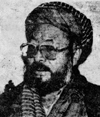
Karim Khalili is the leader of the Hezb-e-Wahdat (Unity Party), which represents the Shia Hazara minority.
Wahdat is the second most powerful military party in opposition to the Taleban. Its main benefactor is Iran, who began the party in the 1980s.
Former leader Ali Mazari mysteriously died in Taleban custody after Wahdat turned to them for help against the mujahideen government. The group maintained pockets of resistance in central Afghanistan after being driven out by the Taleban in 1998.
In the recent offensive, Khalili's troops led the capture of the central town of Bamiyan - the site of the famous buddhas blown up by the Taleban.

Younis Qanooni was the Northern Alliance interior minister, a frequent spokesman for the alliance.
A member of Jamiat-e-Islami, the largest political party in the alliance, led by Burhanuddin Rabbani.

Abdullah was the Northern Alliance's foreign minister.
Abdullah was a close friend of the recently assassinated Northern Alliance commander, Ahmed Shah Massoud.
Abdullah is less religious.He is rich and Westernised. He goes to the bars and nightclubs when he is out of the country. He is seen by many Afghans as the staunchest defender of the Northern Alliance's grip on power.

The chief of southern Afghanistan's Popolzai tribe, he was deputy foreign minister in Afghanistan's mujahideen government. He is well educated and speaks fluent English. However, by late 1994 he had become suspicious of the movement, fearing it had been infiltrated and was controlled by foreigners, including Pakistanis and Arabs.
Karzai describes himself as a moderate Muslim. He initially supported the Taleban movement but feared the overt Pakistani influence over the regime. The assassination of his father, a former politician, in Peshawar two years ago hardened his stance against the Taleban, who were widely believed to have carried it out.
He returned to Afghanistan from exile to bolster support for the former monarch shortly after the US bombing campaign started.
Hamid Karzai is a highly influential figure and potentially commands the loyalty of large numbers of Afghans.
He is a powerful Pashtun tribal leader from the Taleban's political stronghold of Kandahar and a member of the same clan as the former Afghan king, Zahir Shah.
He is well educated and Westernised. He served as a deputy foreign minister in Afghanistan's first Mujaheddin government in 1992.
Mr Karzai has also retained his links with Zahir Shah. He has long supported the former king's plans to build a broad-based government in Afghanistan through the convening of a grand tribal assembly known as a loya jirga.
In October Mr Karzai slipped across the border into Afghanistan.
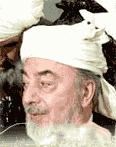
Pir Sayeed Ahmed Gailani is a cleric who left Afghanistan after the communist revolution to found the National Islamic Front in Peshawar. This group became a member of the alliance that formed the Mujahideen government of 1992-96.
Gailani is the spiritual leader of a minority Sufi Muslim group. He is a relatively moderate leader and reports say he has urged the former king to broaden his political base. His vision even has room for moderate sections of the Taleban.

The most powerful warlord during the Mujahedin`s battle against Kabul regime. The most destructive and antisocial element during the years 1970-1975. He carried out a number of terrorists acts within territory of Afghanistan during the Mohammad Dauod presidency and following regimes . Gollbuddin Attended two years of engineering faculty in Kabul University and involved in politics in late 1970 and became member of "Ikhwan-e Muslimin" (Muslims' Brothers) movement in 1970. He received most of military and financial aides from the United States government and CIA during the Afghan War against Kabul regime. After that Mujaheddin became to the power of Kabul regime, Gollbuddin has continued fighting against Raban's government and his Defense Minister Masoud .
Hekmatyar was the strongest force during the years of Soviet occupation. This was largely because his party was the main benefactor of the seven official mujahideen groups recognised by Pakistan and US intelligence agencies for the channelling of money and arms. Mullah Omar supported him during this period, which was when he was blinded in one eye, possibly in factional fighting.
Hekmatyar later joined forces with Dostum. His bombardment of the capital in 1994 is said to have resulted in the deaths of more than 25,000 civilians.
Hekmatyar has accused former President Rabbani of seeking to return to power "with foreign tanks" and has said he will not join a Northern Alliance government Hekmatyar wanted to create an alliance with the Taleban.
Hekmatyar fought against Soviet occupation in the 1980s and then against his rival, the late Ahmed Shah Masood, when the communist government collapsed in 1992 and both factions entered Kabul.
Hekmatyar, who was excluded from the new Mujahedin government by President Burhanuddin Rabbani, lay siege to Kabul causing tens of thousands of civilian deaths. Within two years he and Rabbani were forced to flee as the Taleban descended on Kabul.
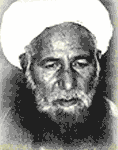
Younis Khalis was a member of Hekmatyar's Hezb-e Islami, and one of the most senior Islamist mujahideen leaders during the war against the Soviets. The current relationship between the two men is unclear.
Younis Khalis was aligned with the Taleban, but he deserted the movement to claim the key Torkham checkpoint on the Pakistani border after Kabul fell.
The newly appointed military commander for the eastern zone, Haji Zaman has been described as the second most powerful man in eastern Afghanistan.
He is educated and multilingual.
Zaman spent years fighting as a mujahideen commander, during the anti-Soviet war between 1979 and 1989.
As former commander of the 11th Afghan division based in Jalalabad, he handed over the city five years ago to the Taliban, ordered his 4,500 soldiers to surrender their weapons, and fled into exile in Paris.
However, he returned to the region during the US air strikes, first setting up a base in Peshawar before returning to Jalalabad.
He has also vowed to lead a force of up to 2,000 fighters to flush out Osama Bin Laden and hundreds of his loyal al-Qaeda followers from Tora Bora, where he believes they are hiding.
He is said to be a friend of the new governor of Jalalabad, Haji Qadeer.
Within hours of the Northern Alliance taking Kabul, Gul Agha Sherzai led a force of men - numbers reported ranged from 200 to 1,000 - across the border from the Pakistani city of Quetta towards Kandahar.
Sherzai was the governor of Kandahar before the Taleban took power in 1994.
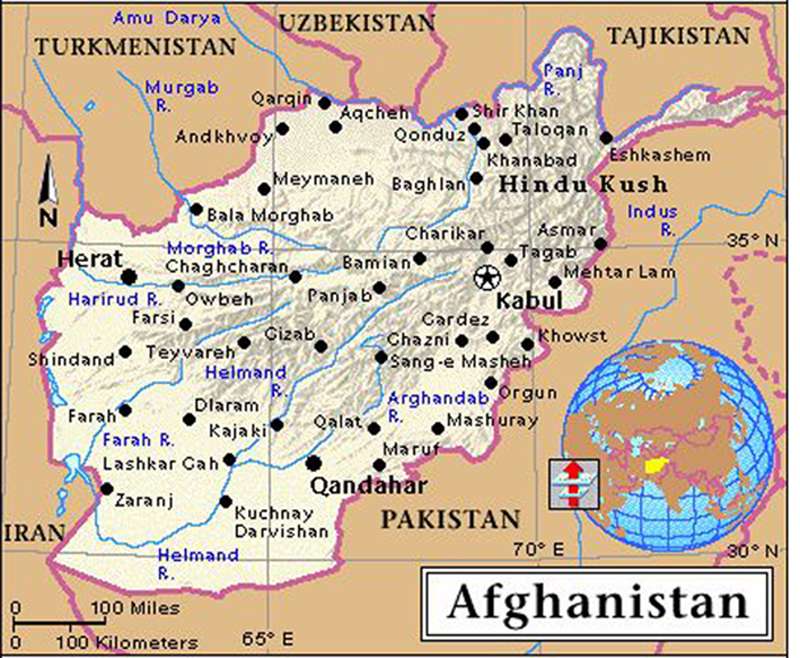
The group - comprised of Afghans trained in religious schools in Pakistan along with former Islamic fighters or mujahedin - proved effective bodyguards, driving off other mujahedin groups who attacked and looted the convoy. They went on to take the nearby city of Kandahar, beginning a remarkable advance which led to their capture of the capital, Kabul, in September 1996. The Taleban's early popularity with many Afghans initially surprised the country's warring mujahedin factions. But it was not purely a question of ethnicity. Ordinary Afghans, weary of the prevailing lawlessness in many parts of the country, were often delighted by Taleban successes in stamping out corruption, restoring peace and allowing commerce to flourish again. Their refusal to deal with the existing warlords whose rivalries had caused so much killing and destruction also earned them respect. The Taleban said their aim was to set up the world's purest Islamic state, banning what they see as frivolities like television, music and cinema.
The Taleban took control of Kabul in 1996 Their attempts to eradicate crime have been reinforced by the introduction of Islamic law including public executions and amputations. A flurry of regulations forbidding girls from going to school and women from working quickly brought them into conflict with the international community. Such issues, along with restrictions on women's access to health care, have also caused some resentment among ordinary Afghans.
The Taleban now control all but the far north of the country, which is the last stronghold of the anti-Taleban forces formerly headed by Ahmed Shah Masood. With 95% of the country under their control, the Taleban had continued to press claims for international recognition. But the Afghan seat at the United Nations continues to be held by former President Burhanuddin Rabbani.
UN sanctions, which were imposed on Afghanistan in 1999 and boosted in 2001, are intended to force the Taleban to hand over Bin Laden. As well as being America's chief suspect in the New York terror attacks, Bin Laden is accused by Washington of plotting the 1998 bombings of American embassies in Kenya and Tanzania, which killed more than 250 people. The Taleban have all along argued that Bin Laden is a guest in their country, and they will not take action against him. Along with many in the Taleban leadership, Bin Laden is a veteran of American-backed Afghani resistance to the Soviet invasion of Afghanistan in 1979. The close bond between Bin Laden and Mullah Mohammed Omar, the spiritual leader of the Taleban, is said to date back to this period.
Mullah Omar has repeatedly shown that he cares more about Muslim opinion than he does about the West. The Taleban had only two sources of much-needed military assistance - Bin Laden with his army of experienced and highly motivated Islamic fighters, and the powerful Pakistani intelligence service. When Pakistan withdraws its support under American pressure, the Taleban was more dependent on Bin Laden.
Mullah Mohammed Omar

The religious leader of the Taleban movement. He was given the title of Amir al-Mo'menein or Commander of the Faithful - after he cloaked himself in a gown said to be that of the Prophet Mohammed - after the fall of Kabul in 1996. Originally a village mullah, he joined Gulbuddin Hekmatyar's Hezb-e Islami and was blinded in one eye, possibly in factional fighting. He helped to found the Taleban movement and presided over its military operations all over the country from his base in Kandahar until the beginning of the US bombing raids.
Wakil Ahmed Mutawakkil
Press spokesman of Mullah Omar, he was swiftly risen through the ranks of the Taleban after being a driver and food taster. Wakil Ahmed Mutawakkil is a moderate Taleban.He is widely seen as heading the moderate element within the Taleban. The moderate element also lost out with the death last year of Mullah Rabbani, who was second-in-command within the regime.
1. Abdul Hakim Mujahid Acted as a point of contact between the Taleban and the United Nations in New York. The UN did not officially recognise the regime.
2. Amir Khan Muttaqi A high-ranking member of the Taleban regime. He has held various posts, including minister of information and culture.
3. Mullah Hassan Akhond He was head of the Taleban council in Kabul.He replaced Mullah Rabbani, the movement's deputy leader, after he died of cancer earlier this year. A radical, he was reportedly being targeted to lead a faction that would challenge Mullah Omar's leadership and replace him.
4. Jalaluddin Haqqani He was Minister for borders and a commander in the Taleban armed forces. A close aide to Mullah Omar, Haqqani led the Taleban assault on Kabul in 1996.
US air strikes begains Fifteen bombers, 25 strike aircraft and 50 Tomahawk cruise missiles were deployed as the US hit back 26 days after the suicide attacks in New York and Washington. Hardware in action
In other developments:
Protests against the air strikes broke out in two Pakistani cities as President Musharraf tried to reassure people that targets were military and did not hit Afghan cities US citizens in Indonesia wer advised to stay indoors and be prepared for possible evacuation amid threats from hardline Muslims The FBI put law enforcement agencies on the highest state of alert across the US . The main target of the attacks, Saudi-born militant Osama Bin Laden made a defiant statement - almost certainly before the attacks - saying the US was "filled with fear from north to south, east to west".As darkness deepened over Afghanistan on Sunday October 7 2001, the US government, backed by the International Coalition Against Terror (the new, amenable surrogate for the United Nations), launched air strikes against Afghanistan. TV channels lingered on computer-animated images of cruise missiles, stealth bombers, tomahawks, "bunker-busting" missiles and Mark 82 high drag bombs. All over the world, little boys watched goggle-eyed and stopped clamouring for new video games
Timeline
Heavy fighting is also said to have broken out between Northern Alliance and Taleban forces north of Kabul.
US forces later air-dropped relief to Afghanistan, including 37,500 ration packs.
Taliban rule of Afghanistan has come to an end as the hard-line Islamic regime handed over control of the southeastern Afghan province of Kandahar on friday 7december 2001 ,Zabul on Sunday to local commanders and tribal chiefs.
Taleban was born by the USA and was barried by USA. It was a very costly experiment.